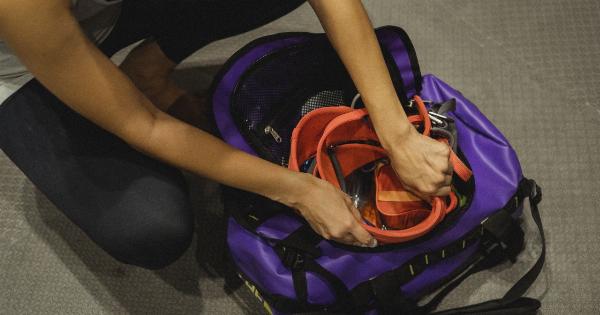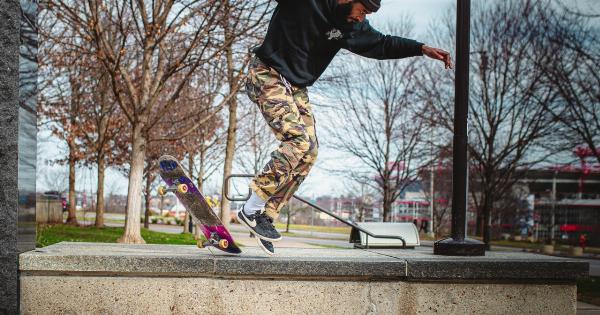Running is a popular form of exercise that offers numerous health benefits. However, it also comes with the risk of injuries, which can be frustrating and hinder your progress.
The good news is that most running injuries can be prevented and treated with the right approach. In this article, we will explore some common runners’ injuries and provide effective solutions to help you stay on track with your running goals.
1. Runner’s Knee
Runner’s knee, also known as patellofemoral pain syndrome, is a common injury among runners. It is characterized by pain around or behind the kneecap. The main causes of runner’s knee are overuse, muscle imbalances, and poor biomechanics.
To prevent and treat this injury, it is important to:.
- Gradually increase your training intensity and mileage to allow your body to adapt.
- Strengthen your quadriceps, hamstrings, and hip muscles to support your knees.
- Use proper running shoes that provide adequate cushioning and support.
- Practice good running form, such as landing with a slight bend in your knees and avoiding excessive inward knee movement.
2. Shin Splints
Shin splints are characterized by pain along the inner edge of the shinbone. They are often caused by overuse, improper footwear, or running on hard surfaces. To prevent and recover from shin splints, follow these steps:.
- Gradually increase your training intensity and mileage.
- Wear shoes with proper shock absorption and arch support.
- Run on softer surfaces, such as grass or trails, instead of concrete.
- Stretch your calf muscles and strengthen the muscles in your lower legs.
- Apply ice to the affected area after running to reduce inflammation.
3. Achilles Tendinitis
Achilles tendinitis is an inflammation of the Achilles tendon, which connects the calf muscles to the heel bone. It is often caused by overuse, tight calf muscles, or improper footwear. Here’s how you can prevent and treat Achilles tendinitis:.
- Avoid sudden increases in training intensity or mileage.
- Stretch your calf muscles before and after running.
- Strengthen your calf muscles through exercises like heel raises.
- Wear shoes with proper arch support and cushioning.
- Consider using orthotic inserts to provide additional support.
4. Plantar Fasciitis
Plantar fasciitis is one of the most common causes of heel pain among runners. It occurs when the plantar fascia, a thick band of tissue that runs along the bottom of the foot, becomes inflamed.
To prevent and alleviate plantar fasciitis, try the following:.
- Wear shoes with good arch support and cushioning.
- Avoid running on hard surfaces, and opt for softer terrain.
- Stretch your calf muscles and the plantar fascia regularly.
- Consider using night splints to keep your foot stretched while you sleep.
- Use a tennis ball or a frozen water bottle to massage the bottom of your foot.
5. IT Band Syndrome
IT Band Syndrome is an overuse injury that affects the iliotibial (IT) band, a thick band of tissue that runs along the outside of the thigh. It often leads to pain on the outside of the knee. To prevent and treat IT Band Syndrome, you should:.
- Avoid sudden increases in training intensity or mileage.
- Strengthen your hip muscles and glutes to improve stability.
- Stretch your IT band and the muscles surrounding it.
- Use a foam roller to massage your IT band regularly.
- Consider cross-training or adding strength training exercises to your routine to reduce strain on the IT band.
6. Stress Fractures
Stress fractures are tiny cracks in the bone that occur due to repetitive stress. They most commonly affect the shinbones and feet. To prevent stress fractures, follow these guidelines:.
- Gradually increase your training intensity and mileage.
- Ensure you’re consuming enough calcium and vitamin D for optimal bone health.
- Include strength training exercises to improve bone density.
- Wear shoes that provide good shock absorption.
- Listen to your body and take rest days when needed.
7. Muscle Strains
Muscle strains occur when the muscle fibers stretch or tear. They can happen in any muscle, but are common in the hamstrings, calves, and quadriceps. Here’s how you can prevent and recover from muscle strains:.
- Always warm up before running with dynamic stretches and light jogging.
- Gradually increase your training intensity and mileage to give your muscles time to adapt.
- Strengthen your muscles through resistance training exercises.
- Listen to your body, and avoid pushing through pain or fatigue.
- Apply ice to the injured area and take rest days when necessary.
8. Blisters
Blisters are painful fluid-filled pockets that form on the skin, usually as a result of friction and moisture. To prevent blisters while running, try the following:.
- Wear moisture-wicking and breathable socks.
- Ensure your shoes fit properly and provide enough room for your toes.
- Apply anti-friction balms or petroleum jelly to areas prone to blistering.
- Consider using blister-specific bandages or tapes to protect vulnerable areas.
- Keep your feet clean and dry to reduce moisture-related blistering.
9. Dehydration and Heat Exhaustion
Dehydration and heat exhaustion are common problems for runners, especially during hot and humid weather. To stay hydrated and prevent heat-related issues:.
- Drink enough water before, during, and after your runs.
- Avoid running during the hottest hours of the day.
- Wear moisture-wicking and breathable clothing.
- Use sunscreen to protect your skin from sunburn.
- Listen to your body and take breaks if you start feeling lightheaded or fatigued.
10. Prevention is Key
The best way to deal with running injuries is to prevent them from happening in the first place. Here are some general tips to minimize the risk of injuries:.





























